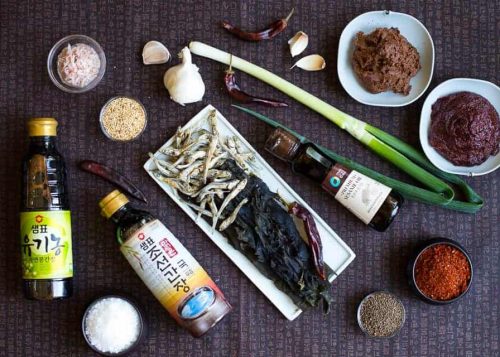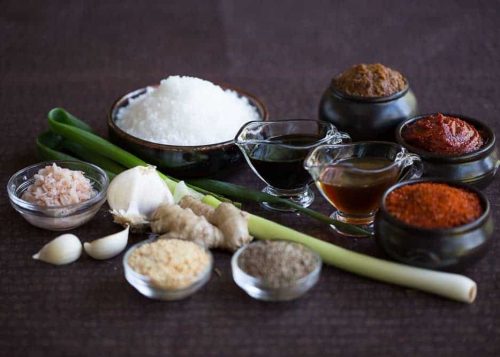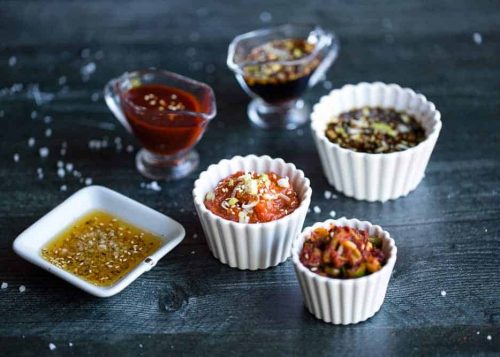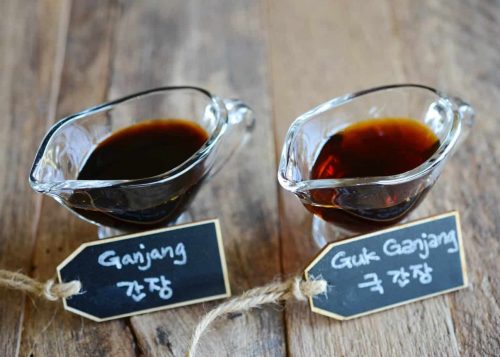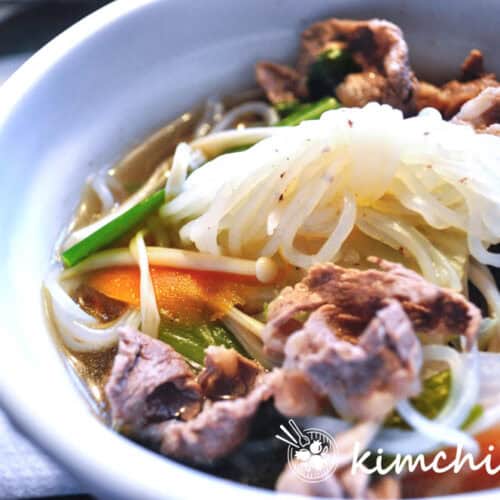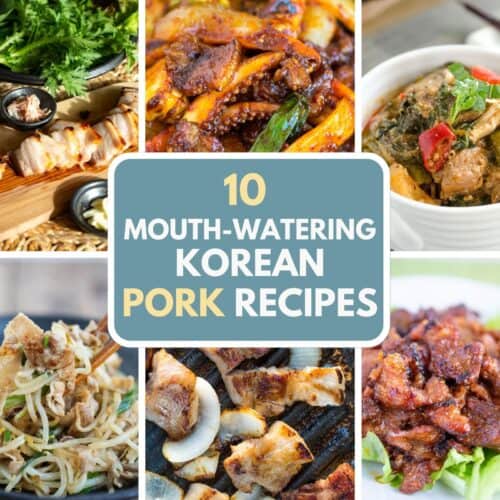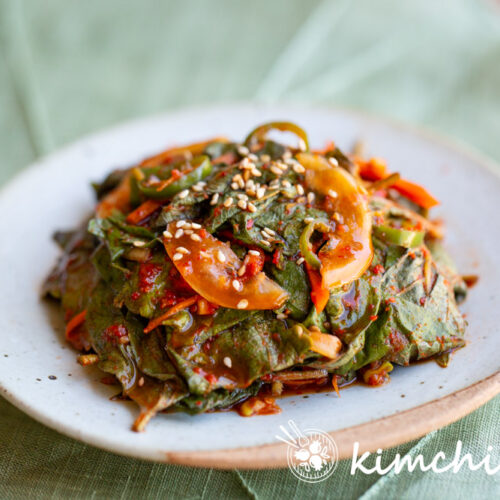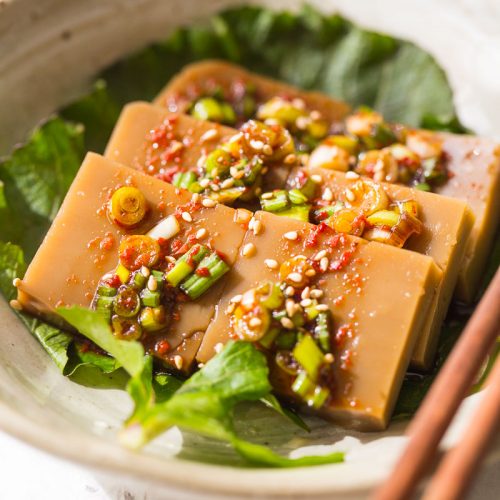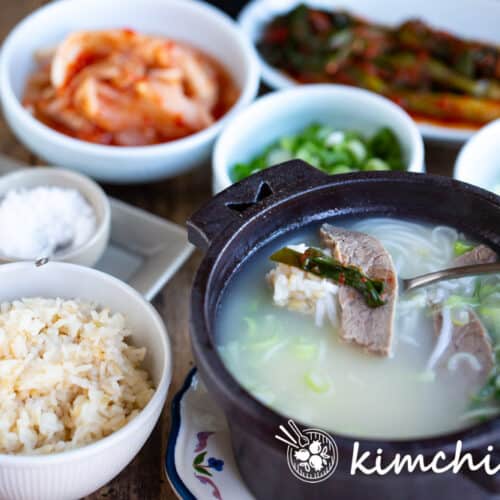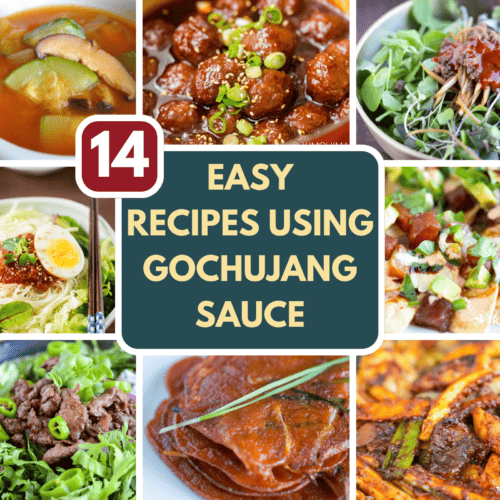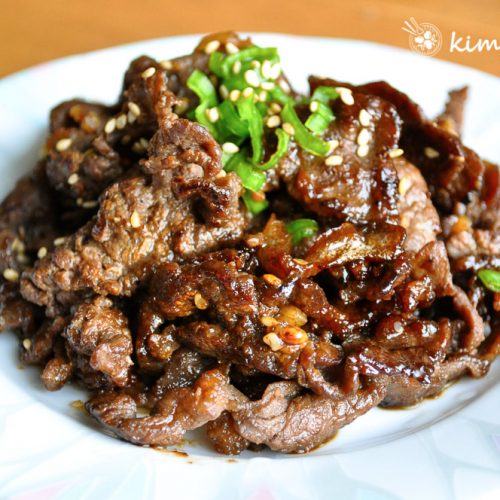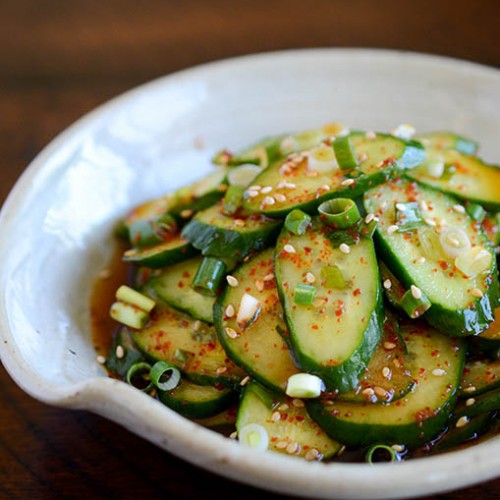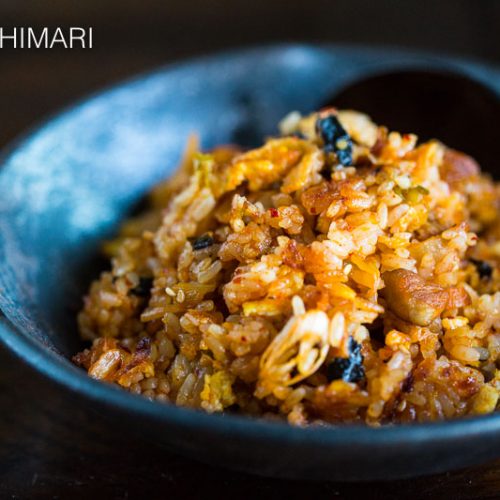Here you will find everything you need to know and learn about Korean food. The basic how-to's and info on ingredients, awesome authentic Korean recipes with detailed step-by-step instructions and pictures, including video tutorials! My goal is to help you understand the basic Korean flavors, cooking techniques and also how to pair flavors so you can enjoy Korean food to the fullest without being in the kitchen all day!
I’m so happy you are here!
Korean food is very uniquely delicious and healthy (mostly anyway). Koreans equally enjoy beef, chicken, pork and a wonderful variety of seafood as Korea is a peninsula surrounded by the sea on all 3 sides. A well balanced menu will have a protein dish along with side dishes or soups unless you are having a noodle dish.
Korean cuisine is largely based on rice, vegetables, and (at least in the South) meats. Traditional Korean meals are named for the number of side dishes (반찬; 飯饌; banchan) that accompany steam-cooked short-grain rice. Kimchi is served at nearly every meal. Commonly used ingredients include sesame oil, doenjang (fermented bean paste), soy sauce, salt, garlic, ginger, gochukaru (pepper flakes), gochujang (fermented red chili paste) and napa cabbage.
Although Korea is a small country, ingredients and dishes vary quite a bit by province. As is the case in most countries, the more south you go, the weather gets warmer and so the seasoning gets spicier and saltier. The more north you go, seasonings are milder, less pungent and dishes have more meat and are richer. An interesting thing to note is that through history, Korean royal court cuisine brought all of the unique and best regional specialties together for the royal family. And Korean Temple Cuisine has evolved as a uniquely VEGAN cuisine that is also usually very mild and does not include garlic in their seasoning.
What does Korean Food Taste Like?
Many people think Korean food is spicy. But NOT ALWAYS. I would guess that about only 20-30% (just from checking various cookbooks) of Korean food is spicy, the rest are not. But somehow the very spicy and strongly seasoned dishes seemed to have caught most of the attention in modern times. Especially, the younger generation seems to be intrigued by eating really crazy spicy foods (more like a challenge) which makes them also more popular.
Korean flavors are very complex and multidimensional that often includes a perfect balance of the 5 flavors - salty, sweet, sour, bitter and umami. Korean cooking is based on a lot of unique fermented sauces which starts a great foundation for a complex flavor profile. The fermentation, brining and drying of ingredients also produce concentrated flavors and textures which also makes Korean food different. Kimchi, Gochujang, Dried Namuls are prime examples of foods that have indescribable umami and funky flavors due to these unique cooking processes.
Well, let's dive in and discover the diverse flavors of Korean cuisine!!

